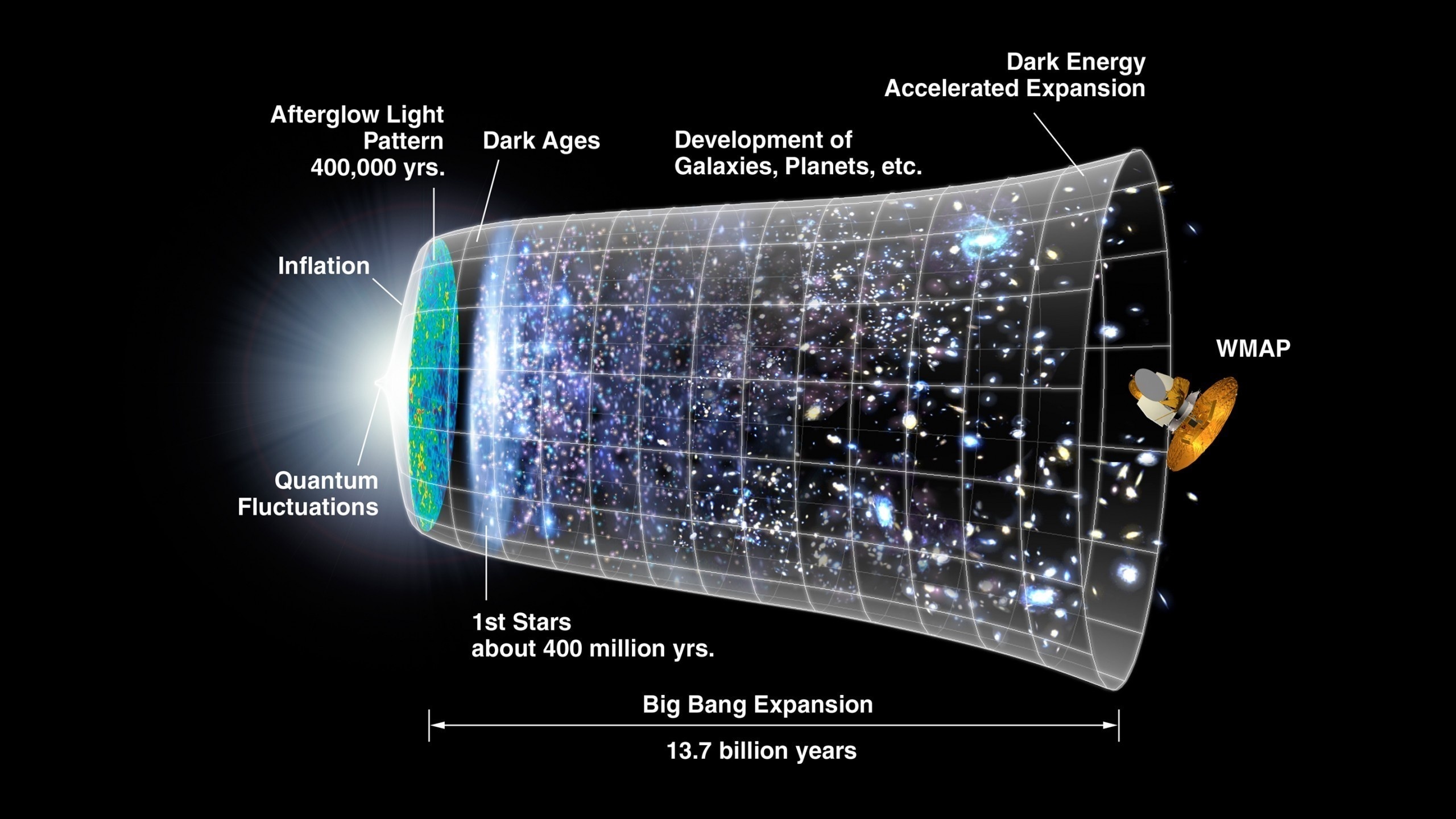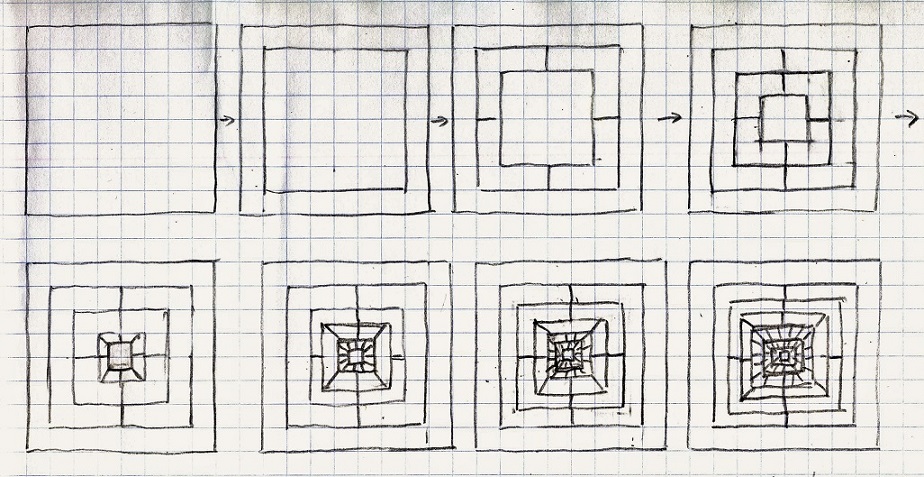a few confusing questions regarding the universe
A text written under a pseudonym Argos Panopty poses a few confusing questions regarding the Universe, or how a picture of the Universe depends on the properties of its observer.
I was walking my little dog today through a nearby meadow. On this winter’s day the grass was still green and the sky was bright blue and clear. I looked up at the sun, thinking how this beautiful yet common sight is possible because some eight minutes ago its hydrogen electrons were jumping from one orbit to another, releasing countless photons that traveled 150 million km through space vacuum to reach the Earth’s atmosphere. Many of them were hitting numerous nitrogen and oxygen atoms producing photons on the blue side of the spectrum, while some were reaching the grass around me producing photons that passed through my eye lens, then through its vitreous gel, and finally exciting my retina cells. From there the eye nerves conveyed these impulses to the millions of vision cells in the occipital lobe, mysteriously producing this beautiful bright picture in my brain which is hidden in total darkness. And all this was happening in each successive instance, maintaining the continuity of the experience thanks to my memory.

How many photons have left the Sun in those few minutes while I was standing in the meadow? How many of them have reached the Earth, and how many hit the grass, from there reflecting toward my eyes and finally forming this picture between millions of connected nerve cells in my brain? And how many other cells in my brain are engaged now in articulating this visual experience into thoughts expressed through the words and sentences you are reading now? Finally, where are all those millions of cells interpreting this as an experience of a single entity: “I”. Where was “I” walking in the meadow then and where am “I” now? How does this “I” maintain the continuity of thoughts while moving through space/time together with my body standing on the meadow which is rotating with the Earth around the Sun and all together with the Milky Way traveling through the Universe? It is this “I” who wonders if there is perhaps some other “I” out there who understands how all this is possible.

1. If the Universe began by expanding from the point of singularity, where would the observer have been to record the expansion? Would it be placed inside or outside of the expanding Universe? In other words, if there was an expansion, it was an expansion in relation to what/whom?

2. If the observer was within the expanding Universe, it would also expand together with the space around it. How could it then notice the expansion itself? What would be its measuring stick?
3. Another possibility for the inside-observer would be that it doesn’t change in size while the Universe around it is expanding. This observer could not have existed from the very beginning of the expansion. It would have to “appear” at some point in space/time having a finite size (in relation to what?) and stay that way while the space around it continued to expand. However, that kind of observer would in some way be exempt (excluded) from the expanding space around it.

4. If space itself is expanding, what does that mean? Is the size of the spatial units expanding, or is the number of spatial units getting bigger? An often expressed opinion is that, at this rate of expansion, stars and galaxies will move further and further away from each other until complete darkness. This hypothesis seems to assume that the expansion somehow applies only to the vacuum space around visible matter, while the segments of space filled with matter will remain the same. If space is expanding why then not assume that space occupied by all matter, from quarks, electrons, protons, to planets, stars and galaxies is not expanding as well?

5. Recent space/time “Big-Bang” representations assume that we as observers are placed outside of this event. It consists of 2D spatial circular elements and the arrow of time representing the third dimension. A series of successive circles resembles Marey’s photographs, turning the entire event into some kind of tunnel or tube. Beginning with the initial low-entropy state some 13.8 billion years ago, going through short rapid expansion (inflation) it continued to grow until the present moment. There are numerous inconsistencies with this model. First, this picture is clearly a view from the outside, but it doesn’t show what this “outside” place that the Universe is expanding into is, what its properties are. Somewhere in this “nowhere place” a fictional observer is placed, with: size, duration and vision. But these are all properties that belong inside the Universe that is being observed.
6. Does it make sense to use our anthropomorphic measures for time (second) and space (meter) to measure an event which occurred when not only humans but life itself didn’t exist? Isn’t this some kind of anachronism? Is it at all possible to know how long a “second” or a “meter” was at the earliest stage of the expansion of the Universe?
7. Then there is this contradiction between the “distant” and the “early” Universe. Namely, according to the current understanding, the entire Universe is expanding in all directions, and the expansion seems to accelerate with the distance. However, the further we look into the space we are observing the younger the Universe that we see. The younger the Universe that we see, the smaller it should appear. How could we reconcile a picture of an expanding Universe with spatial distance from “here” and a shrinking Universe with time distance from “now”? It seems there could be something wrong with our interpretation of the red-shift.
8. If we place a spherical mirror somewhere not far from the solar system, the entire visible Universe would be reflected in this mirror. The closer stars and galaxies would also be close to the mirror’s surface, while the more distant objects would converge toward the mirror’s center. This outside picture of the Universe is just as consistent as the way we perceive the Universe from within.

9. Would it perhaps make more sense to imagine a Universe that started as a single unit, which then kept dividing itself into smaller and smaller parts until it came to the point where it is now?

In fact we could consider two models of the converging Universe. One converging from the center toward the periphery and another converging from the periphery toward the center.


10. Is the Doppler-effect the only possible explanation for the red-shift? What do we know about the properties of space and the behaviour of photons at very long distances? Can a photon from a faraway galaxy remain the same while traveling several million (billion) years?